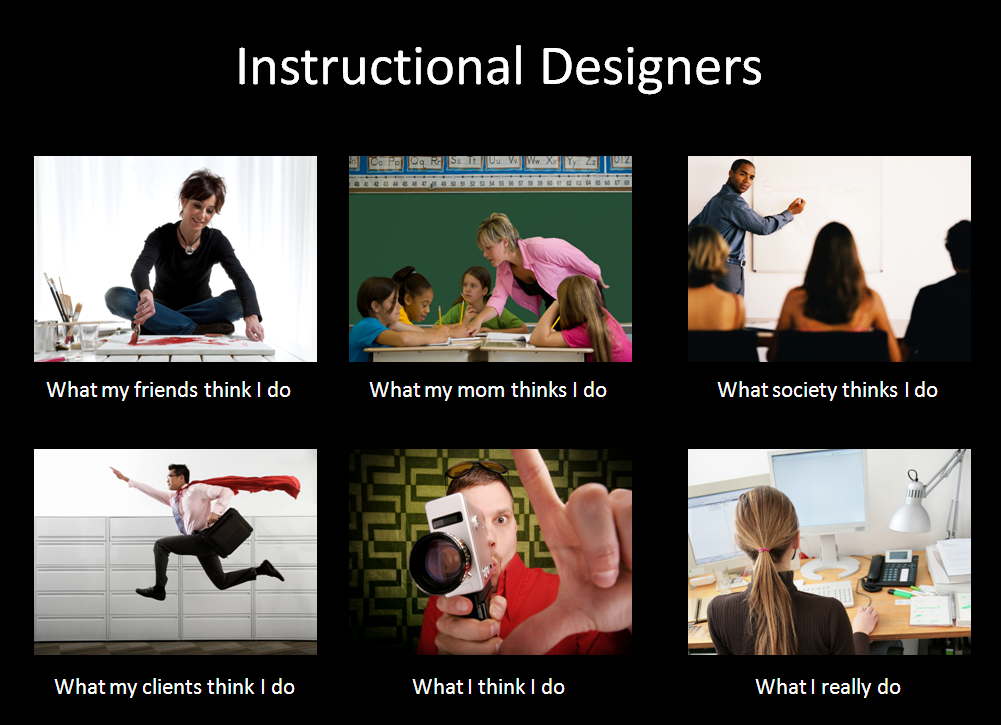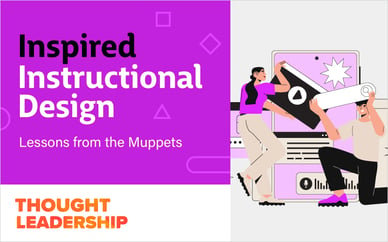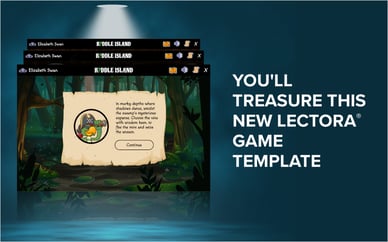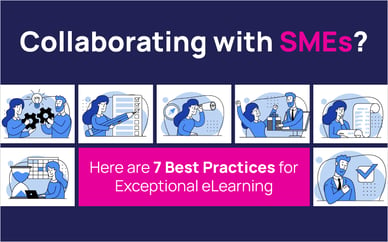Considering a career in instructional design or learning experience design? Creating learning content that helps others can be incredibly rewarding—but it often requires wearing many different hats. One day you’re interviewing subject matter experts, the next you’re a graphic designer or a learning management system administrator.
If you’re new to instructional design, you might be wondering, “What’s a typical day in the life of an instructional designer?”
Or perhaps, you already have an image in your head. Is it one of these below?

Source: know your meme
What Instructional Designers Actually Do
Admittedly, it’s hard to describe a typical day for any job. Instructional design is no different.
There will be variances depending on if you work for an eLearning development agency or in-house for a corporation. You might be a team of 1 or a team of many.
But there are few universal experiences that all instructional designers, learning managers, eLearning developers, learning content designers, etc. can count on. These are:
- Project Kickoff Meetings
- Storyboarding
- Gathering Content
- Review Cycles
Let’s start with project kickoff meetings.
These are essential to getting the info you need and identifying key stakeholders. Knowing as much as possible about a project, what’s needed or expected, and who has to approve the final product are all critical parts of an efficient and effective eLearning development project.
Project kickoff calls typically include you, a project manager, an eLearning developer (if that isn’t also you, the instructional designer), the client or internal stakeholder, and a subject matter expert. This is your time to define the target audience, learning objectives, technical requirements (should it be Section 508-compliant? Does it need to be mobile-friendly?), and other project parameters (Are there specific brand guidelines to follow? Photorealistic graphics versus illustrations?).
For a successful project, from kickoff through to completion, check out our Top Strategies to Avoid a Change of Scope checklist.
After a kickoff, you might be ready to start storyboarding.
Storyboarding is a valuable tool for planning effective eLearning courses and obtaining stakeholder buy-in. Whether you are working for a custom eLearning development company or building corporate training for a bigger organization, you’re going to have a boss, client, or stakeholder who needs to understand your vision. Showing them a storyboard before moving on to development can help prevent costly rework if the developed course doesn’t align with the higher-ups’ vision or needs.
Using the information received in your kickoff meeting, you can analyze the learning objectives and break them down, slide by slide, to ensure that you’re addressing all learning objectives and creating a logical progression of content. Storyboarding also helps you figure out what content, resources, and information you still need before developing the course.
...Which brings us to gathering content.
You’ll most likely be working with a subject matter expert (SME) to get the information needed for the course you’re building. They might send you content in the form of PowerPoint presentations, screen recordings they’ve created, PDFs, and/or Word documents. In some situations, if time and budget allow, you might even go on-site to interview SMEs or learners and observe processes.
Instructional designers must be good at sorting through and digesting content to identify the main ideas and key points that learners need to understand in order to do their jobs well.
We won’t sugar coat it—this part can be boring! But it’s up to you to turn dry technical content into engaging eLearning, whether that’s through interactive content, animated videos, or other instructional strategies. This is where you can really get creative and use your knowledge of how people learn and how to create content that will draw them in and drive behavior change.
At the end of the day, it’s incredibly satisfying when you receive positive learner feedback about your work! It can also be engaging and exciting if you enjoy learning how to do new things—even if they’re not relevant to your life.
But before your eLearning project makes it to the learners, it will go through at least one review cycle.
Starting with a thorough kickoff conversation and a detailed storyboard will pave the way for a smoother review process, but there are always things that get lost in translation or new objectives that get added later in a project.
The eLearning Brothers custom eLearning development team always builds two review cycles in any project timeline. Using a course review tool like ReviewLink® is a good way to keep track of feedback and requested changes.
This is only a small glimpse of what an instructional designer actually does.
Every day is different in instructional design, which makes it a fun and rewarding career.
If you're interested in instructional design, check out our other eLearning-related blogs or sign up for a free trial of Lectora to start building a portfolio of engaging eLearning content.








